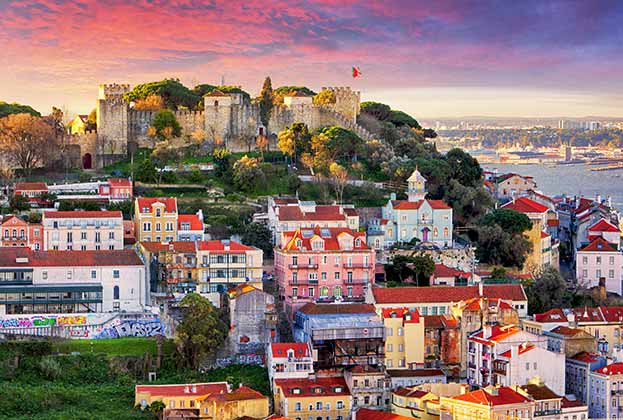Across the 30 cities covered by the Savills World Cities Index, capital values grew at an average rate of 0.8%, exceeding the 0.6% growth forecast from December 2023. But which cities made the top 5?
Capital Values
In the most recent World Economic Outlook, the IMF headlined their global economic forecast with the phrase ‘resilience amid divergence’ as global GDP continues to defy expectations. The resilience in the global economy is also playing out in the prime residential markets – capital value growth across the 30 markets remained positive in the first half of 2024, growing by an average of 0.8% and reflecting a level of relative confidence in the asset class.
This growth is a surprise to the upside as it has exceeded the forecast from December 2023 which predicted growth of 0.6% for all of 2024. However, wider levels of caution remain among buyers as they await clarity on interest rates.
Across the 30 index locations, 60% of the cities tracked reported positive capital value growth. While seven cities reported price falls of less than -1%, the strong fundamentals of these local prime residential markets may support the possibility for capital value appreciation in the second half of the year for these locations.
Year-to-date, European and Middle Eastern cities have seen the strongest capital value growth. For many European locations, under-supplied markets are driving prime residential price increases as there is insufficient supply of high-calibre properties to meet increasing demands from the global base of buyers.
Cities in Southern Europe and the Middle East have seen the strongest capital value growth over the first six months of 2024
Kelcie Sellers, Associate Director, World Research
Cities in Southern Europe and the Middle East have seen the strongest capital value growth over the first six months of 2024; Lisbon leads with a rise of 4.2% for the first half of the year. Amsterdam, Madrid, and Athens have each seen capital value increases above 3% and Dubai rounds out the top five with growth of 2.9% for the first six months of the year.
Across the EMEA region, only two of the 13 markets saw negative capital value growth for the first half of the year. Berlin and London have seen slight price falls of -0.8% and -0.1% respectively. In Berlin, an increase in the supply of luxury properties in some districts without a corresponding rise in demand has led to downward pressure on prices. Though prices have fallen marginally in London, demand from domestic and other international purchasers continues to be resilient, especially given the growing stability in the mortgage market.
In many locations across Europe, particularly Southern Europe, American buyers have become a key prospective buyer base in prime residential markets. A comparatively strong dollar and a growing interest in European lifestyles is bringing increasing numbers of Americans into these prime residential markets.
In the US, persistently high interest rates have brought the housing market to a crawl; the prevalence of the 30-year fixed-interest rate mortgage means that few are willing to enter the housing market particularly if their current mortgage is fixed to a low rate. This even applies in the typically less mortgage-reliant prime market. As a result, prime residential prices have fallen in three of the four US cities, with only San Francisco seeing positive capital value growth of 0.7% for the first half of the year. A trend is emerging across the United States, and in other global jurisdictions, of increasing numbers of cash buyers who are able to avoid the high interest rates through opting out of using a mortgage to finance their purchase altogether.
Asia Pacific markets have seen a more varied performance over the first half of the year, creating a tale of two (groups of) cities. Bangkok, Sydney, and Mumbai have each seen growth of more than 2.5% in the first six months of 2024; each market has seen high levels of demand in their prime markets coupled with limited supply, supporting this pricing. Tokyo has also reported price growth of 1.6% as demand for prime properties also remains high in this market, which has contributed to elevated prices.
Chinese prime residential markets are continuing to see the impact of government measures to support the housing markets, but overall this has done little to move the dial on buyer confidence. Transactions across the five markets remained down during the first half of the year, with only Shanghai seeing positive capital value growth of 0.1% over the period. In Hong Kong, the withdrawal of cooling measures boosted mainstream sales, but prime sales remain depressed given high interest rates, which are linked to US Federal Reserve interest rates, and lower numbers of mainland Chinese buyers. As a result, prime capital values fell by -1.1% over the first half of the year.
.jpg)
World city: Cape Town, South Africa
OUTLOOK
- For the second half of the year, World Cities are predicting an average capital value growth of 0.5%, which would bring total 2024 growth to 1.3%.
- Cape Town is forecast to see the highest growth for the remainder of 2024, with capital value increases of +4% to 5.9% predicted. A more positive political and economic outlook, combined with the prospect of interest rate relief later in the year, bodes well for a recovery in the local housing market.
- The ongoing supply-demand mismatch for high-end residential product is projected to fuel price growth in European cities such as Amsterdam, Lisbon, and Barcelona, where 2% to 3.9% is forecast in the second half of the year.
Read the other articles within Savills Prime Residential Index: World Cities below

